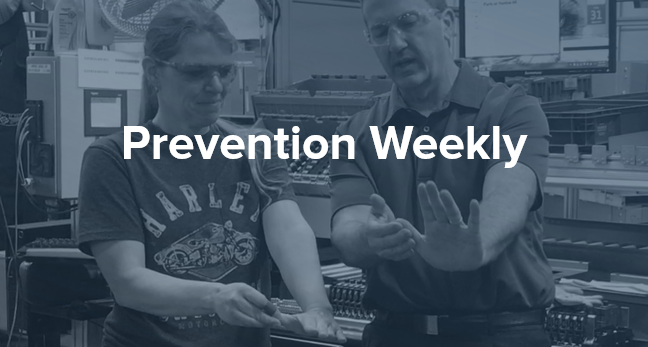Prevention Weekly delivers the best ergonomics, workplace athlete health, and safety leadership news right to your inbox every week.
Featured Article
An Introduction to Total Musculoskeletal Health
Strong communities (and economies as a whole) depend on a safe, healthy, and productive workforce. Supporting the workforce with strong health and safety practices is a key factor in ensuring for ourselves a greater future.
An Introduction to Total Musculoskeletal Health
Ergonomics
Understanding Manual Material Handling and Cart Ergonomics Standards
Although specific force recommendations may vary somewhat, there is general agreement among technical guidelines and standards regarding the approach to determining acceptable push and pull force levels. Each approach considers similar variables such as frequency of exertion, distance pushed or pulled, etc. All recommend recognizing strength differences between males and females and designing tasks so that a strong majority of women are capable of safely exerting the required forces to push or pull carts.
Understanding Manual Material Handling and Cart Ergonomics Standards
Workplace Ergonomics Quiz – How Much Do You Know About Ergonomics at Work?
How much do you know about ergonomics? Test yourself on how much you know about workplace ergonomics and how you can use this knowledge to establish and maintain a sustainable ergonomics process at your facility.
Workplace Ergonomics Quiz – How Much Do You Know About Ergonomics at Work?
Workplace Athlete Health
Warm-up Stretching Case Study
Ready to implement a warm-up stretching program at your facility? Learn how a best practice approach leads to exceptional results.
Case Study: How Warm-up Stretching Helped a Large Distribution Facility Reduce Recordables by 80%
Are Your Workers Doing Work?
GCC’s study on presenteeism – the phenomenon where employees show up for work but don’t perform at full capacity – included nearly 2,000 employees and validated against the World Health Organization’s (WHO) Workplace Health and Productivity Questionnaire (HPQ). The report found that while employees were absent from work an average of four days per year each, they confessed to being unproductive on the job for 57.5 days each – almost three working months. Businesses wanting to improve productivity should focus on reducing presenteeism, notes one of the study authors.
Presenteeism Costs Business 10 Times More than Absenteeism
Safety Leadership
Learn Safety Culture from NASA
Safety Culture’s mission at NASA is to create an environment where everyone works safely, feels comfortable communicating safety issues, learns from mistakes and successes, feels confident balancing challenges and risks while keeping safety in the forefront, and trusts that safety is a priority. NASA’s Safety Culture Model is based on five criteria, or factors. Hit the link to learn more about their safety culture philosophy.
Learn Safety Culture from NASA
Ergonomics Plus solutions help proactive safety teams prevent musculoskeletal injuries and advance employee well-being.
